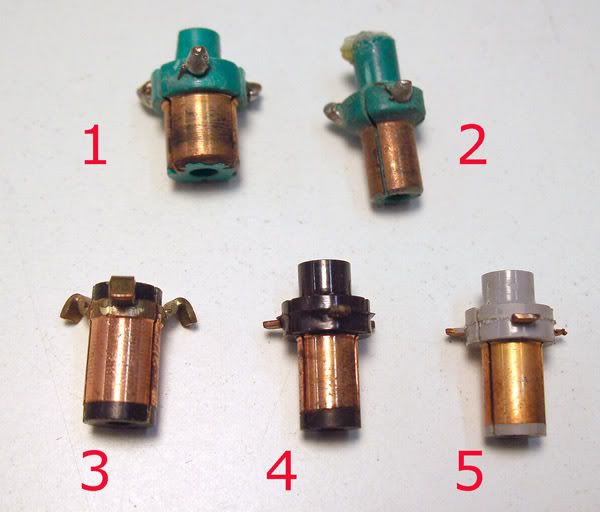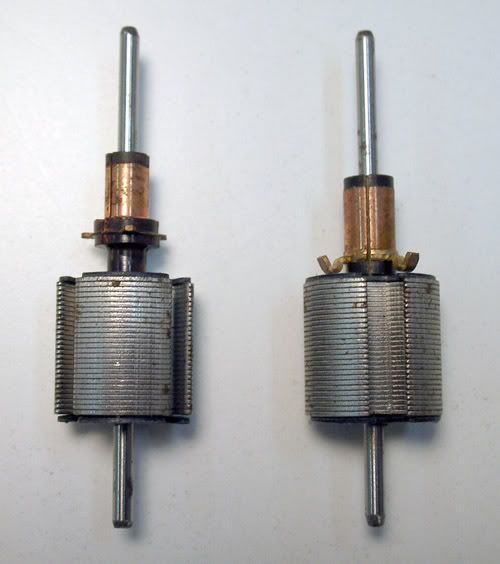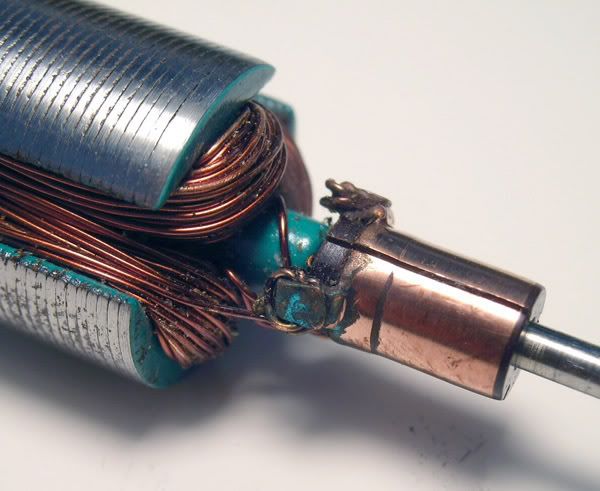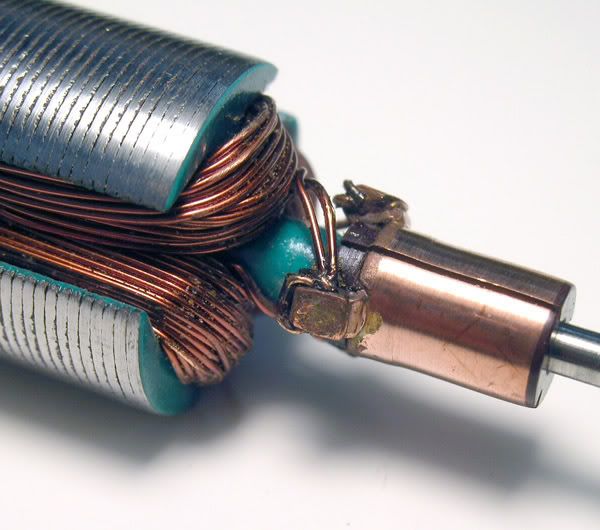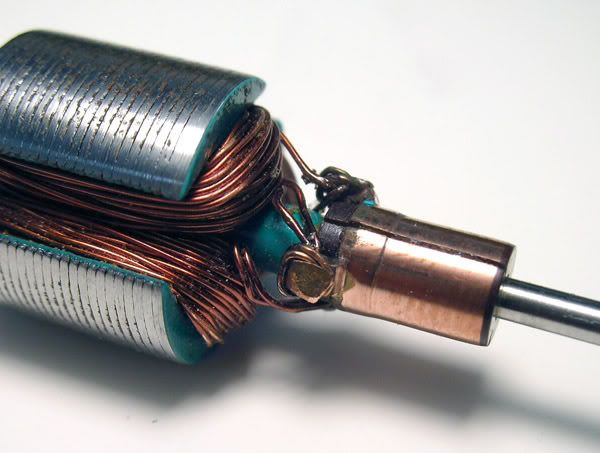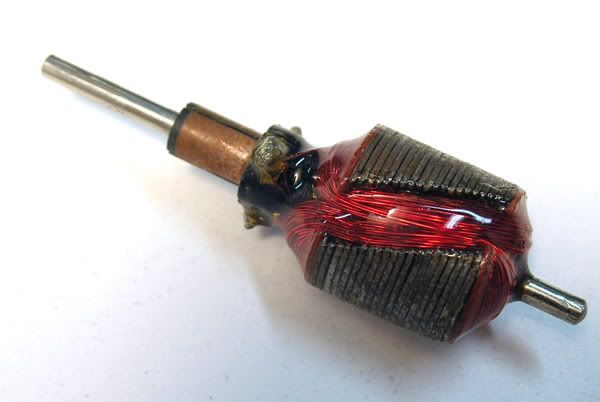While I agree with most of what Greg just posted, I will add some more insight.
Red Champion springs do seem to work well in most applications in X-12 motors and the classes below that. I only tweak my springs for two reasons . . .one is to reduce arcing in unusually high-power, high glue situations with wing cars and the other is to increase brakes in scale cars.
My normal mode of operation when going to different tracks is to build all my motors with Champion red springs fiddle-sticked to make sure both side are the same tension. If I need more brakes, I change the spring to the Koford M-313 springs, which have a bit more tension, to increase brakes in scale cars or to reduce arcing in wing cars. There are times the Koford springs kill the top end of the motor; if that's the case, I tweak my Champion springs by bending the short leg from the 3 o'clock position to 4 o'clock position and that usually gives me the brakes without killing the top end.
When it comes to OPEN motors, Bob Green once told me you can never have too much spring tension and I tend to agree with that.
Another trick is to trim back (or make shorter) the brush tip on the side that makes the comm edge black. In most cases you will see no difference in performance, but will see a reduction in heat.
What you are looking for is a nice grey-colored thick brush "track" all the way around the comm surface where the brush rides. Once you have this, your tension is correct and when you have this nice thick grey-colored track, this helps to reduce oxidation of the comm surface where the brush rides and of the brush itself. If your track is mostly copper with spotty black tracks, you don't have enough tension. IF your track is all black and pitted . . . not enough tension or you are racing with a battery charger on. Increase tension to solve this problem.
Another tip: the copper area outside the brush track area should be a nice white gold color. If you have this, your tension and gearing are correct.
If the area outside the brush track is orange, you have a bit too much tension and the motor is running a tad warm. Sometimes a tooth bigger on the spur or a tooth smaller on the pinion with help.
If the area outside the track is red, too much tension and maybe under-geared.
If the area ouside the track is black, you have big problems..... LOL!
If the color is gold to white gold, all is good.
Man, did this get off-topic from the original post of comm diameters.....

